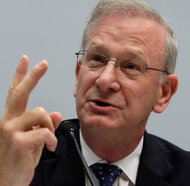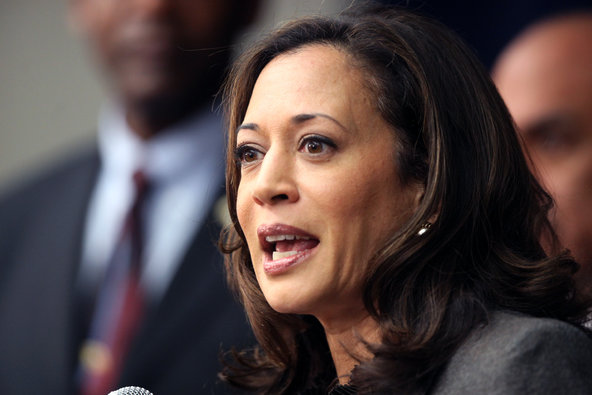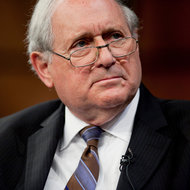 Yuri Gripas/ReutersThomas Hoenig, a Federal Deposit Insurance Corporation official.
Yuri Gripas/ReutersThomas Hoenig, a Federal Deposit Insurance Corporation official.
Confronted with large and complex banks, financial regulators have spent years drafting rules that are just as complicated.
On Tuesday, though, regulators signaled that the byzantine approach was inadequate. In a significant shift, the Federal Deposit Insurance Corporation, along with the Federal Reserve and the Office of the Comptroller of the Currency, proposed stricter banking rules that aim for simplicity.
The agencies’ move is part of their continuing efforts to strengthen the financial system and prevent situations where taxpayer-financed bailouts might be required.
The latest regulations focus squarely on capital, the financial cushion that banks have to hold to absorb potential losses. In theory, a bank with higher levels of capital is more likely to weather shocks and less likely to need government aid in a crisis. The proposed rules would raise a crucial requirement for capital held by the largest banks.
“This will increase the overall financial stability of the system,” said Thomas M. Hoenig, vice chairman of the F.D.I.C. “This is an advantage to the banks over the long run, and to the economy. I am confident of that.”
The agencies’ latest push could meet fierce resistance, however. As outlined, the new capital requirements could be costly for the largest banks, which have 60 days to comment on the rules.
The F.D.I.C. estimated that the country’s eight biggest banks would have to find as much as $89 billion to comply with the proposed rules. An analysis of JPMorgan Chase’s books suggested that it might have to bolster its capital position by $50 billion, a number the bank declined to verify.
The added burden for the big banks unnerves some in the industry.
“This goes a little higher than is necessary,” said Tony Fratto, a partner at Hamilton Place Strategies, a research and public relations firm that has represented banking trade groups. Mr. Fratto said the new rules could weigh on the economy and undermine the global competitiveness of the largest American banks. “It’s our view that there has to be a trade-off with greater restrictions,” Mr. Fratto said.
The regulators are acting at a time when some members of Congress are calling for tougher bank regulation because they believe the sweeping overhauls instituted soon after the financial crisis fell short. Senator Sherrod Brown, Democrat of Ohio, and Senator David Vitter, Republican of Louisiana, introduced a bill earlier this year that demanded capital increases exceeding what the agencies are now proposing.
“The Brown-Vitter bill really galvanized the debate about ‘too big to fail’ and capital ratios,” said Camden R. Fine, president of the Independent Community Bankers of America, an industry group that supports the agencies’ proposed rules. “It really focused the regulators’ attention on these capital issues.”
With their latest move, the regulators hope to make the rules clearer and tougher.
After the crisis, American regulators agreed to impose an international banking overhaul known as Basel III. Officials like Mr. Hoenig have criticized Basel regulations because they rely on a method called risk weighting to set capital. With risk weighting, banks estimate the perceived riskiness of assets. They are then allowed to hold less capital, or even no capital, against assets that appear less risky. A bank may have $1 trillion of assets on its balance sheet, for example, but many of those assets could have low risk weightings. As a result, the bank might be able to reduce its total of risk-weighted assets to $500 billion. It would then calculate its needed capital from that lower figure. With a capital requirement of 7 percent, the bank would need $35 billion in capital.
Critics have questioned the risk weighting process, arguing that it can be inconsistent and complex and leave banks short of capital.
The regulations proposed Tuesday are intended to compensate for the shortcomings of risk weighting. Using a yardstick known as the leverage ratio, the proposed rules would not allow the bank with $1 trillion in assets to discount any of that sum. In fact, the bank would have to increase the asset total it uses to calculate capital to reflect risks not readily apparent on its balance sheet.
The agencies estimate that the new calculations would increase the largest banks’ asset totals by around 43 percent. The $1 trillion bank would, in essence, become a $1.43 trillion bank.
The proposed rules would also effectively require the largest banks to hold capital equivalent to 5 to 6 percent of their new asset totals. The hypothetical $1.43 trillion bank would therefore have to hold more than $70 billion. “Risk weighting is based on a very arcane and complicated series of ratios and formulas that are immediately gamed,” Mr. Hoenig said. “The leverage ratio is a check on that.”
Stock market investors appeared to shrug off the tougher requirements. Shares in the largest banks, which have risen sharply in recent months, were mostly up on Tuesday.
“I am surprised by the market reaction,” said Richard Ramsden, a bank analyst at Goldman Sachs. “It’s a fairly demanding proposal.”
Only two big banks, Wells Fargo and Bank of America, appear to already have sufficient capital to meet the proposed leverage ratio requirements, according to an analysis by Keefe, Bruyette Woods.
But other big banks may be more strongly affected. JPMorgan Chase, the nation’s largest bank by assets, has two large subsidiaries with federal deposit insurance. Those subsidiaries would have to hold 6 percent capital, according to the proposed rules. In theory, this could push up their combined capital requirement to $177 billion from the $127 billion they hold today.
Regulators may favor such an outcome because JPMorgan, like some other large banks, uses its insured subsidiaries to hold most of its derivatives. Derivatives, financial instruments that can be used to hedge risks or speculate, can be a source of losses and instability when markets are in severe turbulence.
The banks have until the end of 2017 to comply with the higher requirements. In the next two months, they are likely to push back hard. But with the economy strengthening and bank profits at record highs, the banks may not find sympathetic audiences.
Advocates of higher capital say it can increase confidence in the banking sector and promote lending.
Mr. Fratto, of Hamilton Place Strategies, is skeptical of that viewpoint. “Do we want to conduct that experiment at a time when we’ve seen banks shedding assets, exiting businesses and pulling back a bit on lending?” he asked.
These days, regulators have more power to press ahead in the face of any opposition. The Dodd-Frank overhaul passed by Congress in 2010 gave regulators added leeway to toughen rules for large banks. The leverage ratio is only one initiative regulators are pursuing. The Federal Reserve, for example, is going to propose a rule that raises capital requirements for banks that borrow heavily in the markets. But even with the flurry of new rules, Mr. Hoenig says he does not think the banks’ hands will be tied.
“They have plenty of flexibility to lend and invest,” he said.
A version of this article appeared in print on 07/10/2013, on page B1 of the NewYork edition with the headline: Regulators Seek Stiffer Bank Rules On Capital.
Article source: http://dealbook.nytimes.com/2013/07/09/regulators-seek-stiffer-bank-rules-on-capital/?partner=rss&emc=rss



